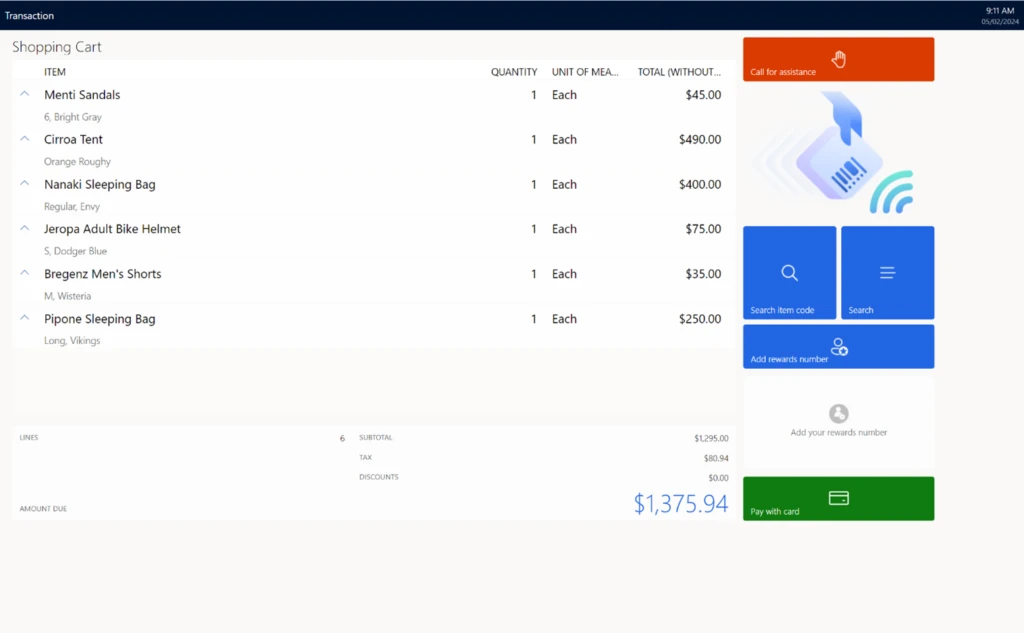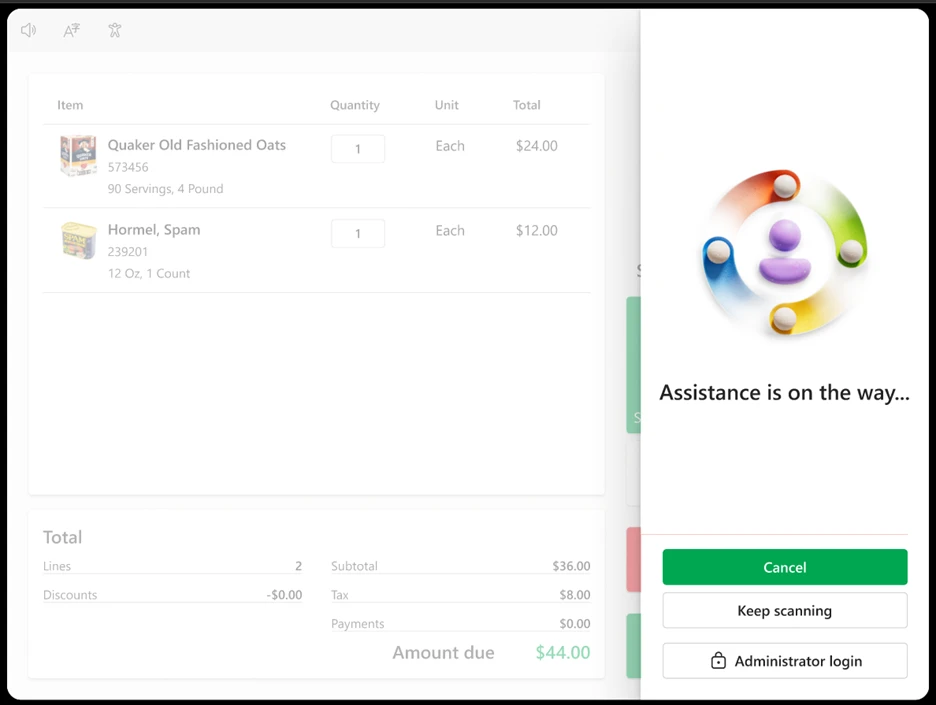Despite the convenience of online shopping, many shoppers still value the hands-on experience of visiting retail stores. The instant gratification, social interactions, and serendipity of physical shopping continues to attract buyers. With the evolution of technology, retailers are seeking more automated ways to fulfill their customers’ shopping needs. Self-service checkout solutions have become a crucial component of retail businesses’ strategies aimed at enhancing the overall shopping experience.
Long lines at checkout can result in decreased sales and unhappy customers. Modern shoppers seek control, ease, and security while purchasing, leading to a preference for self-service. Retailers are adopting self-checkout (SCO) systems to offer more personal and confidential buying experiences. The growth in SCO is partly due to labor shortages and rising wage costs. RBR research predicts self-checkout terminals will grow by 90% annually worldwide, indicating a trend toward faster, self-reliant service.
While there are clear advantages, it’s essential to acknowledge and address some of the challenges through technology. These challenges encompass issues related to scanning, the overall usability of checkout devices, losses attributed to theft and inadvertent misuse, as well as the absence of personal interaction.
Discover the benefits of Microsoft Dynamics 365 Commerces Self-checkout Preview. Self-checkout is available as a public preview.
Self-checkout in Dynamics 365 Commerce
The new self-checkout solution in Dynamics 365 Commerce is the same point-of-sale application (Store Commerce app) in self-checkout mode. Payment integrations, localization support, hardware integrations and any extensions built for the fixed till will also work for the self-checkout app. This allows retailers to quickly turn on self-checkout by leveraging their existing investments on Store commerce app for Windows. The Store Commerce app in self-checkout mode supports the following:
- Simplified login that allows cashiers to access the registers while also allowing shoppers to self-checkout.
- Out-of-box self-checkout layout for a quick start allowing users to scan items, support loyalty, and pay with credit or debit.
- Intuitive interface for shoppers that provides only the supported actions in self-checkout while disabling store associate actions.
- Call for assistance to allow shoppers to request assistance for elevated actions like voids, overrides and discounts.
- Browse operation that allows shoppers to browse for products that are not scannable or too big or too small to scan.
- The ability to restrict certain products from being purchased via self-checkout using a configuration in Headquarters.
- Offline support for business continuity even during network outage.
- Support for store commerce peripherals such as Scanners, payment terminals and printers for self-checkout.
- Adyen payment integration out-of-box.

Self-checkout to meet every retailer’s need
Retail sectors have diverse needs for point of sale and self-service checkout systems. Fashion retailers might prefer kiosk-based solutions for efficient scan-and-pay transactions. Grocery stores require self-checkouts integrated with weighing and bagging scale capabilities, along with cash handling machines. Store commerce self-checkout solution is built on commerce SDK and therefore is fully extensible for customers. Here are a few ways retailers can tailor the solution for their business needs.
Retailers can easily configure the default self-checkout layout to add operations that fit their business needs. For example, they can include an operation to apply coupons.
The Store Commerce self-checkout system is hardware agnostic and works across a variety of different hardware. Retailers cater to their unique needs regarding certain hardware peripherals through development of custom integrations with either the supported OPOS drivers or tailor-made SDKs.
Moreover, retailers have the advantage of integrating their existing localizations, payment methods, and additional extensions that are established within the cashier-managed workflows directly into the self-service checkout procedures.
In scenarios where cashier intervention might be necessary, such as when items with particular discounts are scanned, retailers can employ out-of-box extensions to promptly request cashier assistance.
Theft and losses in self-checkout
While self-checkout drives efficiency, there is still a high risk of theft and accidental loss as it’s easy for customers to by-pass scanning items or make honest mistakes. Retailers need to balance the efficiency of self-checkout with the need to thwart theft. Some retailers have achieved this by limiting the number of items in the checkout stand, some have eliminated cash as a payment method.
In addition, new theft detection systems are now available in the market using cameras and algorithms for spotting thefts. There are image-recognition algorithms used in combination with multiple cameras to detect shopper’s movements for theft. Microsoft’s Azure vision, allows retailers to train the model with their own catalog and use camera-based image detection during checkout to identify and add items to the cart thereby reducing the risk of theft.
Retailers can use additional mechanisms to trigger cashier intervention for dubious scenarios such as repeated scanning of identical barcodes, unusual scanning of multiple low-priced items, items missing in the bagging area, etc .

Copilot
As we introduce Copilot features in Store Commerce, they could be leveraged easily for self-checkout. For instance, copilot can play a role while a customer is doing a price check or browsing for product availability. Voice-assistance in Copilot will help make the shopper experience smoother. Furthermore, we expect that Copilot scenarios such as product discovery, product suggestions, and personalized offers will be of high value for a shopper using a kiosk.
Future of self-checkout
Traditional self-checkout (SCO) methods often utilize kiosks, but retailers are also exploring scan-and-go options for added convenience. These allow customers to use their own devices or the store’s device to scan items and pay with their chosen method. Additionally, smart carts with integrated computerized screens are emerging, enabling shoppers to avoid traditional checkout lines for increased efficiency. However, while these innovations are gaining popularity, they might not be ideal for all merchandise types, could elevate theft risks, and might be more appropriate for stores with smaller footprints.
As Store commerce self-checkout gains wide adoption by multiple retailers in various industry segments such as apparel and fashion, department and grocery store we will keep a close eye on customers’ need and incorporate their feedback into the product.
For instance, our customers have requested that self-checkout systems include interruption features for assistance calls tailored to the retailer’s specific requirements for theft prevention or validation and provide an option for shoppers to select their preferred language.
It is becoming clear that retailers favor a hybrid model that combines human interaction with automated convenience. With the power and efficiency of Microsoft Dynamics 365 Store commerce point of sale alongside Store commerce self-checkout, we aim to provide customers and shoppers with exceptional shopping experience.
To enable Store commerce self-checkout today, please visit: Enable self-checkout in the Store Commerce app – Commerce | Dynamics 365 | Microsoft Learn.
The post Announcing public preview of Dynamics 365 Store Commerce Self-checkout appeared first on Microsoft Dynamics 365 Blog.